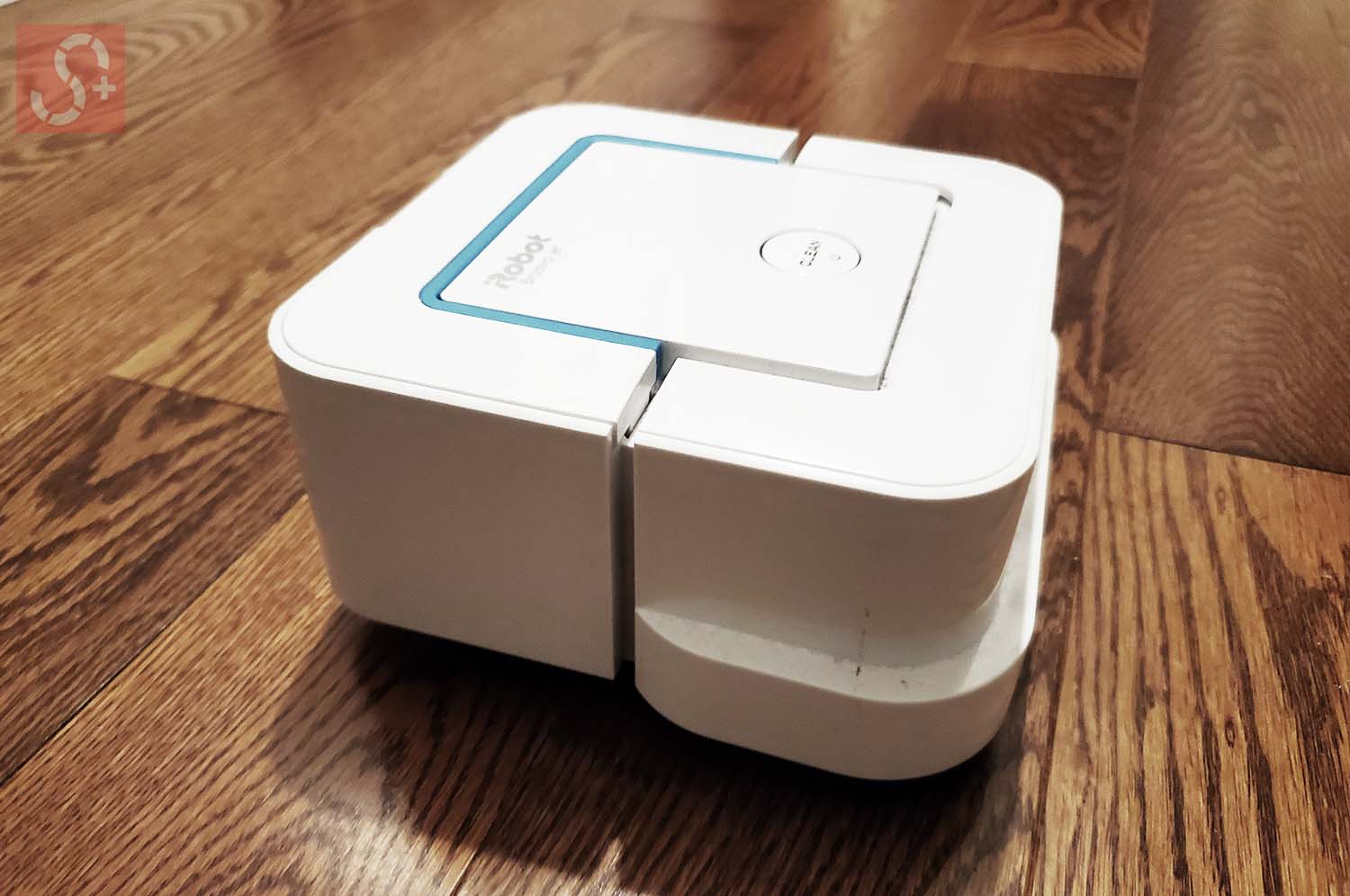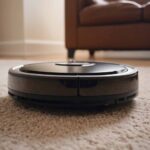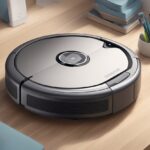Imagine having a clean house without putting in the effort of doing the entire work yourself, straining your lower back, and missing out on doing what you would be doing otherwise – anything else.
Your mind says one thing, your body, however, just wants to kick back and watch your favorite Netflix shows hours on end.
You figure you could buy a robot mop to do the work for you, but does it really work? How well does it actually do the job?
After using my robot mop for two years and running it once a week, I find it effective at keeping surfaces like laminate, tile, and hardwood clean. Although the robot mop works well, I still use my traditional mop or wet Swiffer several times a year to clean some of the harder-to-reach areas of the floor.
So, you decide to look up different types of potential robotic minions. Suddenly, you get bombarded with an avalanche of multiple brands telling you it is essential for you to buy their product.
I’m going to tell you how they actually work, to begin with, the potential inconveniences and benefits, and whether they do what they claim to be capable of.
Are robot mops good enough to replace your conventional mop?
In short, pretty much yes, they are, but at a price. However, not every robot mop is built the same way.
This means not every robot will do it all flawlessly on its own. It depends on the price, the features they come with, your expectations and knowledge about their function, and the situation.
A mid to high-end robot mop can wipe liquids entirely (so long as they aren’t too large, in which case, they would just turn them into a smudge), charge themselves, know which rooms to clean, and give you all the time you need to do anything else on your mind.
But how good you want your robot mop to be will depend on your research and the budget you’ve set aside for your new little companion.
In this recent article, I discuss robot mop and vacuum hybrids.
Robot Mop Pros & Cons You Should Know Before Buying
Pros
- Saves water (Robot mops use just the right amount of water to clean each square foot of your home.
- Saves time (Other than filling the water tray, changing the cleaning pad, and a bit of maintenance, it is pretty much a hands-free mopping solution).
- Follows your cleaning schedule for years.
- Always keeps the house looking clean.
- Automate cleaning.
- Schedule cleaning when you’re away (This is great for times when you know you have guests over, but you don’t have time to go home and mop. All it takes is one click on your phone to start mopping. This can be done from anywhere in the world).
- It’s very quiet(Don’t disturb tenants in the basement)
- Pet friendly.
- Smart Navigation – Maneuver around furniture.
Cons
It can make your floors look hazy (When using too much cleaning solution or too much grime on floors. might need to run robot mop several times to have a haze-free floor)
- It needs to recharge several times, depending on the size of your home. (Some models of robot mops will automagically return to base to charge then continue where it left off from once fully charged)
- Maintenance (washing or replacing cleaning pads),
- Navigating obstacles (Some models of robot mops are prone to getting stuck in between places like dining room chair legs).
What Benefits You Can Expect From A Robot Mop
Once you know the features of your product and how it works, you can set it down for it to get the job done.
You don’t have to move that couch anymore every time you suspect there’s dirt behind it.
Your robot mop/vacuum will slide in there and clean it up without you ever having to bend over to check.
Once it’s done, it comes right out and gets to other spots.
You can find some pretty intelligent robots. Some can charge themselves once their batteries are running low, then resume where they left off (like the iRobot Braava Jet M6).
You can even tell it which rooms to clean and which not to go into it – really, you can basically say to the robot that beyond this particular line in the house, “you shall not pass!”.
This is the case for the iRobot 240 Braava, for example. You can let it know precisely where to wipe whatever you spilled for it, wipe that specific area really well and only that spot.
If your house isn’t a complete mess and you didn’t drop anything too large, say pieces of glass or bread crumbs that are a bit too big, it’ll swallow it up and wipe the fluid off the floor very neatly.
It will leave you plenty more time to do your work, spend time with family or friends, and relax your lower back. If you know an elderly person, say your parents or grandparents, who might have mobility issues, this would be a gift from above.
Long gone are the days of bending over backward to get to those dirty spots and tiring yourself to keep your house neat. On this end, this is simply perfect.
Go watch the game, and your tiny servant will take care of the rest.
Using robots to do your housework is awesome!
In a recent article, I cover everything you need to know about the pros and cons of robot vacuums.
Robo Mops Are not flawless, Here Are Their Setbacks
Money, money, money. Depending on how much spare cash you have lying around, hiding between the sofa cushions, this could be a major setback for some.
If you barely look up “best robot mops” (since you figured you might as well get the right product if you want to spend some cash on it), you’ll notice the inexpensive one starts at almost 200$, which goes up to a staggering 700$ for some. At this rate, you’re debating whether it’s worth it or not.
I personally wanted to test the tech and didn’t want to spend a lot right away. The best entry-level solution I found was iRobot 240 Braava, which I have zero regrets about buying.
The price point was good, and it did such an excellent job for something so simple-looking. If you’re looking for something with all the bells and whistles, you might want to check out the Braava Jet m6.
The cool thing about the Braava Jet m6 you can schedule it to work together with the iRobot Roomba s9+ robot vacuum. After the iRobot Roomba s9+ stops vacuuming, it will return to its base, and the mop will start. Amazing! I one day hope to buy the combo pack.
I look at cost in terms of my time. Any tool that gives my time back to me is worth it. Especially if it’s a task, I don’t like doing, and I can reclaim my time in perpetuity. That’s a big win in my books!
It takes an average of 20 mins(17 hours annual) to mop my 1000sqf main floor once a week. That’s 1.2 seconds per SQF. In a larger home, you can see how this can add up to more of a time suck.
Using a robot is primarily hands-off, but you still have to keep an eye on it from time to time. Let’s take the ILIFE Shinebot W400s as an example, which will need you to fill the water up from time to time, as it could hold up to .85 liters at a time.
What if it gets stuck between furniture in some corner and drains its battery?
While some products are built with features for you not to end up in this situation, it really depends on the price you put on the product.
A robot mop that you bought for dirt cheap will undoubtedly not have the capabilities another one has.
Basically, you get what you paid for. Therefore, do check the features before you buy any particular product.
It won’t do the entire job. I mean, it would be lovely to have a machine that knows what you want and will leave no leaf unturned to do it all, just like you would have done it.
However, the reality depends on how large the mess is, and you still might have to mop or vacuum.
Large amounts of liquid that are in the way of the machine might be merely smudged by the robot mop.
Larger objects might trigger it to believe it’s a carpet or a higher level, which many do not cross on purpose.
It usually does this, so it doesn’t get stuck. If it does meet a larger obstacle that it might be programmed to recognize, it would merely push it forward.
Then goes the effort of keeping tabs on the battery. The battery life on some will last 3 hours until it needs to be recharged.
If your plan is to turn it on and leave, you might have to buy more expensive machines – some will realize when they are short on battery and move to the recharge pack to charge itself, then resume where it left off. Again, you get what you pay for.








